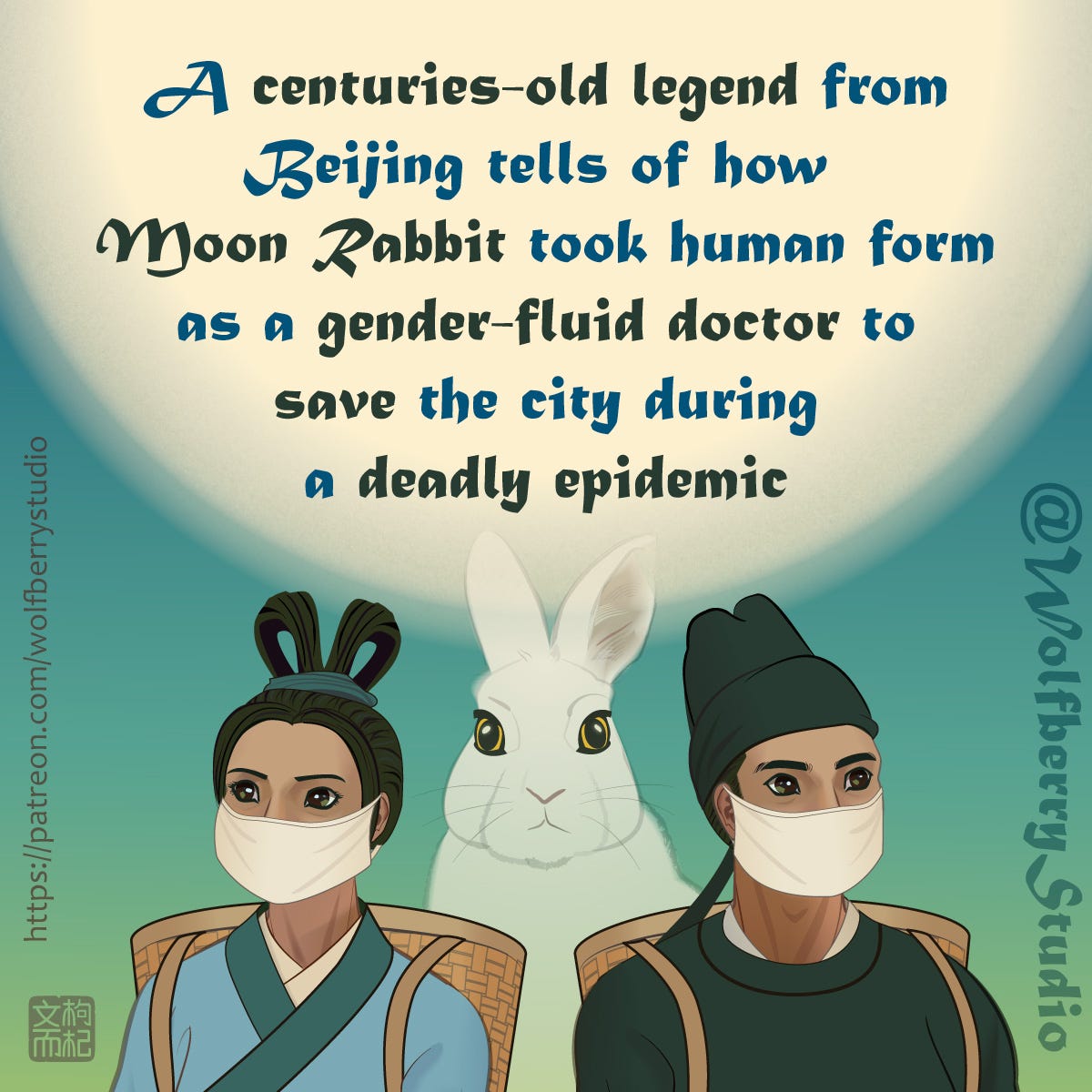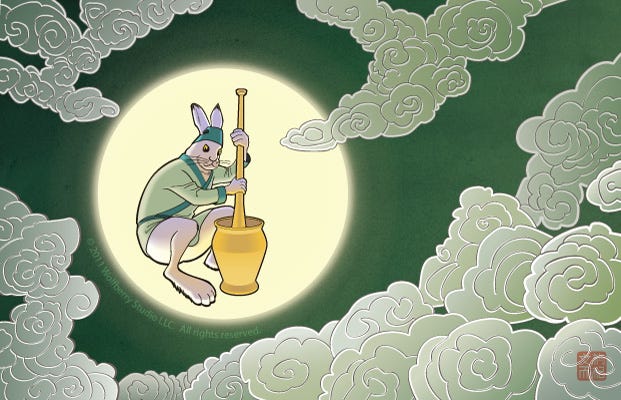How Jade Hare/Moon Rabbit, a Genderfluid Shapeshifter, Saved Beijing from an Epidemic
A centuries-old folktale of the deity who is still honored in Beijing in the 21st century
In Beijing, there is a custom of honoring figures of 兔奶奶/兔儿爷 (“Dame Hare/Sir Hare” or “Lady Rabbit/ Lord Rabbit”). The legend behind this custom goes back to before the 17th century:
"It was said, in a certain year, a deadly epidemic suddenly swept through Beijing. Almost every household was struck, and there was no cure for the disease. When [Moon deity] Chang' E saw what was happening, she was grieved, and sent her companion the Jade Hare to Earth to heal the people.
Jade Hare transformed into a teenage girl and went from house to house curing patients. The people, in gratitude, offered many gifts to them[1], but Jade Hare wanted no reward. They only took from each household a set of clothes, changing their outfit each time they moved on to a new location. Sometimes they appeared as a man; sometimes they appeared as a woman.
To reach more people, Jade Hare rode on a horse, a deer, a lion, and a tiger. They covered all of the capital and its suburbs. Jade Hare returned to the Moon Palace after the pestilence was eradicated. From then on, people made clay idols of Jade Hare, some riding a deer, some riding a phoenix, some dressed in armor, some dressed as artisans and tradespeople.
On the 15th day of the 8th lunar month, each household places offerings of fruits, vegetables, and legumes on the deity's altar, to thank them for bringing blessing and happiness to the human world. The people address them fondly as Sir Hare or Dame Hare."
Sources
"兔儿爷"的前世今生 (人民日报海外版)
兔儿爷 on Baidu Encyclopedia
Is 玉兔 Jade Hare/Rabbit a girl or a boy?
In 2012, Ningbo Laipite Cultural Media Company produced a short children’s cartoon about Beijing’s Jade Hare legend. At 8:38, the narrator states, "Sometimes [Jade Hare] is a woman. Sometimes [Jade Hare] is a man."
Although this legend and its associated observances are local to Beijing, stories of Jade Hare are told all over China and beyond. There are different stories about how Jade Hare came to live on the moon. There is no consensus as to its gender.
Is 玉兔 yutu a hare or a rabbit?
玉兔 yutu is usually translated as “Jade Rabbit”. 兔tu can be translated as either “rabbit” or “hare”, but there are no rabbit species that are native to China. Given that China does have several native species of hares, “hare” is probably a more accurate translation.
Note:
[1] The use of ‘they’ as a singular gender-neutral pronoun in English dates back to at least the 14th century. The English poem William and the Werewolf in 1375, Jane Austen’s Mansfield Park in 1814 , as well as other English works in the centuries in between, used ‘they’ to refer to one person of indeterminate gender.
Prior to the 20th century, there were no gender distinctions for the third person pronoun in written Chinese. (There is still no gender distinction for third person pronoun in spoken Chinese. ‘It/she/he are all pronounced 'ta'.) 他 was traditionally used in the same way as singular gender-neutral 'they/them' is used in English.



